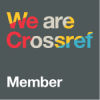Hybrid solutions for didactics in higher education: An interdisciplinary workshop of ‘Visual Storytelling’ to develop documentation competences
Abstract
The article reports on the results of a Design-Based Research path realized through a workshop about the “Visual Storytelling” (VS). The workshop aimed to develop teacher’s professional competences about digital narrative documentation to be certified through the Open Badge system. The interdisciplinary design was developed according to the ICT-TPACK framework between the two courses “Methodologies, Didactics and Technologies for Teaching” and “Educational Research” in the Master’s degree in Primary Teaching. 32 students were involved to deal with the documentation of some real educational experiences observed at school. They were asked to fill a semi-structured questionnaire at the end of the workshop. Other data came from a rubric used to evaluate VS products from three different points of views (students’ self-assessment; university teachers; school teachers). The workshop stimulated the students to use technologies creatively, critically and reflectively to develop an authentic task realizing a VS product. According to the students’ opinion, the workshop also facilitated collaborative processes as well as skills of self-assessment and the personalization of learning.
Received: 08 October 2018
Accepted: 20 March 2019
Published online: 29 May 2019
Downloads
References
Ala-Mutka, Kirsti. Mapping digital competence: towards a conceptual understanding. Luxembourg: Publications Office of the European Union, 2011.
Alismail, Halah Ahmed. “Integrate Digital Storytelling in Education.” Journal of Education and Practice 6, no .9 (2015): 126-129. http://files.eric.ed.gov/fulltext/EJ1082416.pdf.
Angeli, Charoula, and Nicos Valanides. “Preservice elementary teachers as information and communication technology designers: An instructional system design model based on an expanded view of pedagogical content knowledge.” Journal of Computer Assisted Learning no. 21 (2005): 292-302.
_____. “Epistemological and methodological issues for the conceptualization, development and assessment of ICT_TPCK: Advances in Technological Pedagogical Content Knowledge.” Computers & Education, 52, no. 1 (2009): 154-168.
_____. “Technology mapping: An approach for developing technological pedagogical content knowledge.” Journal of Educational Computing Research 48, no. 2 (2013): 199-221.
Boardman, Margot. “‘I know how much this child has learned. I have proof!’ Employing digital technologies for documentation processes in kindergarten.” Australian Journal of Early Childhood 32, no. 3 (2007): 59+ .
Calvani, Antonio, Antonio Fini, and Maria Ranieri. La Competenza Digitale nella scuola. Modelli e strumenti per valutarla e svilupparla. Trento: Erickson, 2010.
Cope, Bill, and Mary Kalantzis (eds.). Multiliteracies: Literacy learning and the design of social futures. London: Routledge, 2000.
Corbetta, Piergiorgio. La ricerca sociale. Metodologie e tecniche. II Le tecniche quantitative. Bologna: Il Mulino, 2003.
De Rossi, Marina, and Graziella Gentilini. How to produce documentation to relate teaching and training experiences. Padova: Cleup, 2007.
De Rossi, Marina, and Corrado Petrucco. Le narrazioni digitali per l’educazione e la formazione. Roma: Carocci, 2013.
De Rossi, Marina, and Emilia Restiglian. Narrazione e documentazione educativa. Percorsi per la prima infanzia. Roma: Carocci, 2013.
_____. “To be a competent documentalist. The experience of preservice educators of early childhood with the digital storytelling.” In Educating for the future, edited by Eystein Arntzen, 342-357. Brussels: ATEE aisbl, 2014.
_____. “The experience of ICT integration in Higher Education: Digital Storytelling for educational documentation. 9th annual International Conference of Education, Research and Innovation – Conference Proceedings, edited by Luis Gómez Chova, et al. 8624-8632. Valencia: IATED Academy, 2016.
De Rossi, Marina. “Questioni metodologiche, soft skill e integrazione delle ICT/ Methodological demands, soft skill and ICT integration.” Formazione & Insegnamento. Rivista internazionale di Scienze dell’Educazione e della Formazione 15, no.1 (2017): 193-204.
Enkenberg, Jorma. “Instructional design and emerging teaching models in higher education.” Computers in Human Behavior 17, no. 5-6 (2001): 495-506.
Fullan, Michael, and Maria Langworthy, (eds.). How New Pedagogies Find Deep Learning. London: Pearson, 2014.
Galliani, Luciano. La scuola in rete. Bari: Laterza, 2004.
Harris, Judy, and Mark Hofer. “Technological pedagogical content knowledge (TPACK) in action: A descriptive study of secondary teachers’ curriculum-based, technology-related instructional planning.” Journal of Research on Technology in Education 43, no. 3 (2011): 211-229. http://ftp.jrc.es/EURdoc/JRC67075_TN.pdf.
Hattie, John. Visible learning for teachers: Maximizing impact on learning. New York, NY, US: Routledge/Taylor & Francis Group, 2012.
Hsu, Pi-Sui. “Examining changes of preservice teachers’ beliefs about technology integration during student teaching.” Journal of Technology and Teacher Education 21, n. 1 (2013): 27-48.
Iezzi, Domenica Fioredistella. Statistica per le scienze sociali. Roma: Carocci, 2009.
Jamissen, Grete, Pip Hardy, Yngve Nordkvelle, and Heather Pleasants (eds). Digital Storytelling in Higher Education. International Perspectives. New York: Springer, 2017.
Jonassen, David, Kayle Peck, and Brent Wilson. Learning with technology: A constructivist approach. Upper Saddle River, NJ: Merrill, 1999.
Kember, David. “Promoting Student-Centred Forms of Learning across an Entire University.” Higher Education: The International Journal of Higher Education and Educational Planning 58, no. 1 (2009): 1-13.
Lambert, Joe. Digital storytelling cookbook, Center of Digital Storytelling. Berkeley: Digital Diner Press, Berkeley, 2007.
Laurillard, Diana. Teaching as a design science. London: Routledge, 2012.
Le Boterf, Guy. Repenser la compétence. Paris: Eyrolles, 2010.
Maddin, Ellen. “Using TPCK with Digital Storytelling to Investigate Contemporary Issues in Educational Technology.” Journal of Instructional Pedagogies 7 (2012): 1-11 http://www.aabri.com/manuscripts/11970.pdf. .
Marsh, Herbert, and Michael Bailey. “Multidimensionality of students’ evaluations of teaching effectiveness: A profile analysis.” Journal of Higher Education 64, no.1 (1993): 1-18.
Marsh, Herbert, and Michael Dunkin. “Students’ evaluations of university teaching: A multidimensional perspective.” In Higher education: Handbook on theory and research, edited by John Smart, 143-234. New York: Agathon Press, 1992.
McDrury, Janice, and Maxine Alterio. Learning through Storytelling in Higher Education. London: Kogan Page, 2003.
McLellan, Hilary. “Digital storytelling in higher education.” Journal of Computing in Higher Education 19, no.15 (2006): 65-79.
Messina, Laura, Marina De Rossi, Sara Tabone, and Pietro Tonegato. “Formare i futuri insegnanti a progettare la didattica integrando le tecnologie.” In Teach Different!, edited by Marina Rui, Laura Messina, and Tommaso Minerva, 298- 302. Genova: Genova University Press, 2016.
Messina, Laura, and Marina De Rossi. Tecnologie, formazione e didattica. Roma: Carocci, 2015.
Mishra, Punja, and Matthaew Koehler. “Technological pedagogical content knowledge: a framework for integrating technology in teacher knowledge.” Teachers college record 108, no. 6 (2006): 1017-1054.
Pellerey, Michele. Le competenze individuali e il portfolio. Roma: ETAS, 2004.
Porter, Wendy, Charles Graham, Christian Springt, and Kyle Welch. “Blended learning in higher education: institutional adoption and implementation.” Computers & Education 75 (2014): 185-195. doi:10.1016/j.compedu.2014.02.011.
Raieli, Roberto, and Perla Innocenti. Multimedia informational retrieval: metodologia ed esperienze internazionali di content-based retrieval per l’informazione e la documentazione. Roma: AIDA, 2004.
Ranieri, Maria, and Isabella Bruni. “Mobile storytelling and informal education in a suburban area: a qualitative study on the potential of digital narratives for young second generation immigrants.” Learning, Media and Technology 38 (2013): 217-235.
Ranieri, Maria, and Isabella Bruni. “e-MEL. Un laboratorio blended per lo sviluppo delle competenze digitali e mediali dei futuri insegnanti.” MEDIA EDUCATION 8 (2017): 19-30.
_____. “Digital and media literacy in Teacher Education: Preparing undergraduate teachers through an academic program on digital storytelling.” In Handbook of Research on Media Literacy in Higher Education Environments, edited by Jayne Cubbage, 90-111. Hershey, PA: IGI Global, 2018.
Recommendation of the European Parliament and of the Council of 18 December 2006 on key competences for lifelong learning (2006/962/EC) http://eur-lex.europa.eu/legal-content/EN/TXT/PDF/?uri=CELEX:32006H0962&from=EN. .
Recommendation of the European Parliament and of the Council of 23 April 2008 on the establishment of the European Qualifications Framework for lifelong learning (2008/C 111/01) http://eur-lex.europa.eu/legal-content/EN/TXT/PDF/?uri=CELEX:32008H0506(01)&from=EN.
Restiglian, Emilia. Progettare al nido. Teorie e pratiche educative. Roma: Carocci, 2012.
Robin, Bernard. “Digital storytelling: A powerful technology tool for the 21st century classroom.” The College of Education and Human Ecology, The Ohio State University 47, no. 3 (2008): 220-228.
Sadik, Alaa. “Digital storytelling: a meaningful technology-integrated approach for engaged student learning.” Education Tech Research Dev 56, n. 4 (2008): 487-506.
Samuelowizc, Khaterine, and Johm Baine. “Revisiting academics” Beliefs about teaching and learning.” Higher Education 41, Issue 3 (2001): 299-325.
Scardamalia, Marlene, John Bransford, Bob Kozma, and Edys Quellmalz. “New assessments and environments for knowledge building”. In Assessment and teaching of 21st century skills, edited by Patrick Griffin and Esther Care, 231- 300. Dordrecht: Springer, 2012.
Segel, Edward, and Jeffrey Heer. “Narrative Visualization: Telling Stories with Data.” IEEE Transactions on Visualization and Computer Graphics 16, no. 6 (2010): 1-11.
Seits, Hilary. “The Power of Documentation in the Early Childhood Classroom.” Young Children, March (2008): 88-93.
Smeda, Najat, Eva Dakich, and Nalin Sharda. “The effectiveness of digital storytelling in the classrooms: a comprehensive study.” Smart Learning Environments 1, n. 6 (2014): 1-21.
Tondeur, Jo, Pareja Roblin, Johan van Braak, Joke Voogt, and Sarah Prestridge (2016). “Preparing beginning teachers for technology integration in education: Ready for take off?” Technology, Pedagogy and Education 26, no. 2 (2016): 157-177.
Trentin, Guglielmo. “A Multidimensional Approach to e-Learning Sustainability.” Educational Technology 47, no. 5 (2007): 36-40.
_____. “Orientating Pedagogy Towards Hybrid Learning Space.” In Progress in Education, edited by Roberta Nata, 104-124. Hauppauge N.Y.: Nova Science Publishers Inc., 2015.
Tuzzi, Arjuna. L’analisi del contenuto. Introduzione ai metodi e alle tecniche di ricerca Roma: Carocci, 2003.
Authors are required to sign and submit a copyright transfer agreement after acceptance but before publication of their manuscript. To that effect, they receive, from the Managing Editor of Tuning Journal for Higher Education, a standard copyright assignment form designed along the following lines:
1. Authorship:
The author who signs the copyright transfer agreement must be the sole creator of the work or legally acting on behalf of and with the full agreement of all the contributing authors.
2. Copyright and Code of conduct:
a) Authors warrant that their work is original; has not been previously copyrighted or published in any form; is not under consideration for publication elsewhere; its submission and publication do not violate TJHE Ethical Guidelines for Publication and any codes (of conduct), privacy and confidentiality agreements, laws or any rights of any third party; and no publication payment by the Publisher (University of Deusto) is required.
b) Authors are solely liable for the consequences that may arise from third parties’ complaints about the submitted manuscript and its publication in Tuning Journal for Higher Education (TJHE).
c) Authors grant to the Publisher the worldwide, sub-licensable, and royalty-free right to exploit the work in all forms and media of expression, now known or developed in the future, for educational and scholarly purposes.
d) Authors retain the right to archive, present, display, distribute, develop, and republish their work (publisher's version) to progress their scientific career provided the original publication source (Tuning Journal) is acknowledged properly and in a way that does not suggest the Publisher endorses them or their use of the wortk.
e) Authors warrant that no permissions or licences of any kind will be granted that might infringe the rights granted to the Publisher.
3. Users:
Tuning Journal for Higher Education is an Open Access publication. Its content is free for full and immediate access, reading, search, download, distribution and reuse in any medium or format only for non-commercial purposes and in compliance with any applicable copyright legislation, without prior permission from the Publisher or the author(s). In any case, proper acknowledgement of the original publication source must be made and any changes to the original work must be indicated clearly and in a manner that does not suggest the author’s and or Publisher’s endorsement whatsoever. Any other use of its content in any medium or format, now known or developed in the future, requires prior written permission of the copyright holder.


1.jpg)
1.jpg)
.jpg)
1.jpg)
.jpg)
.jpg)









